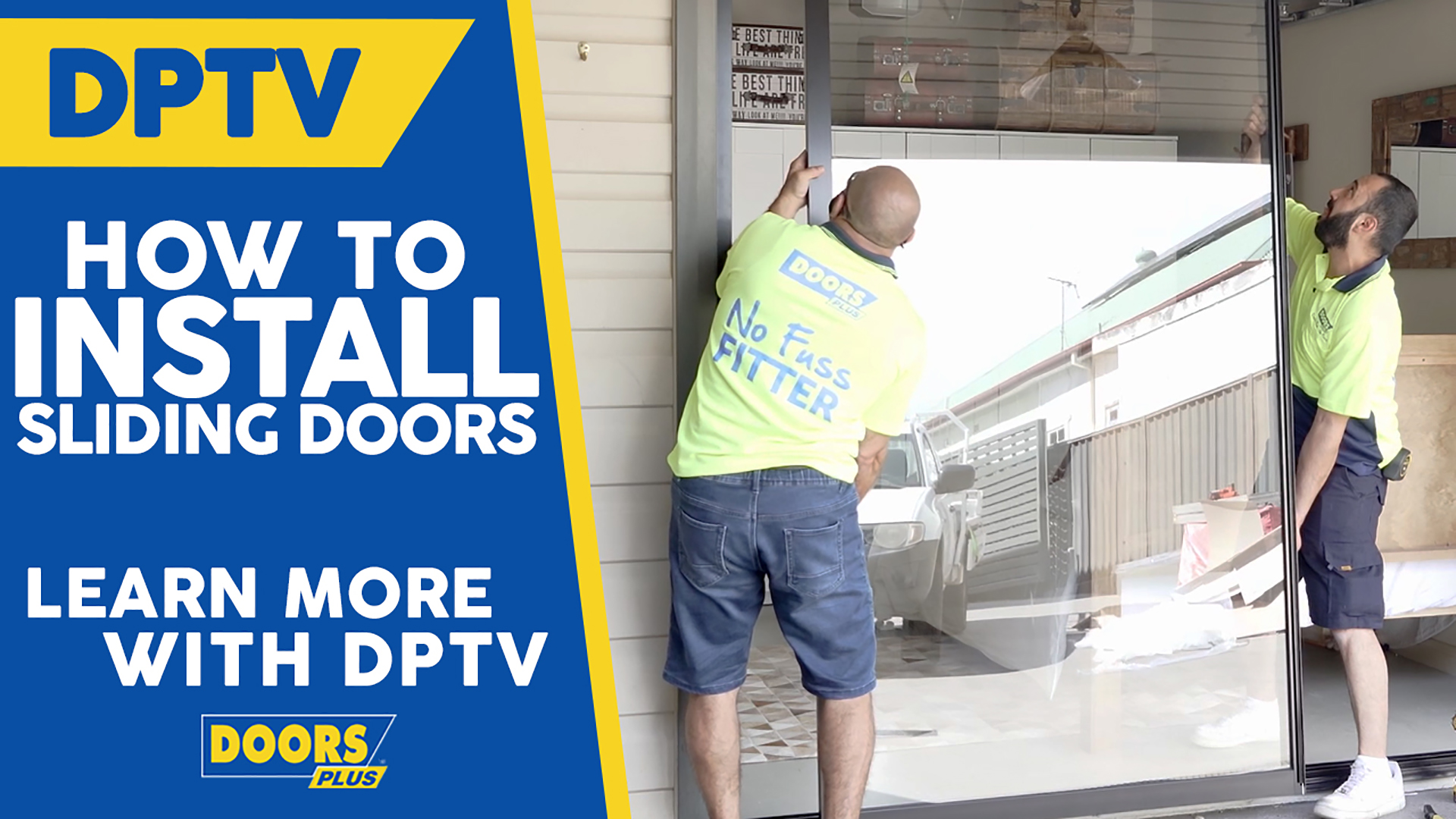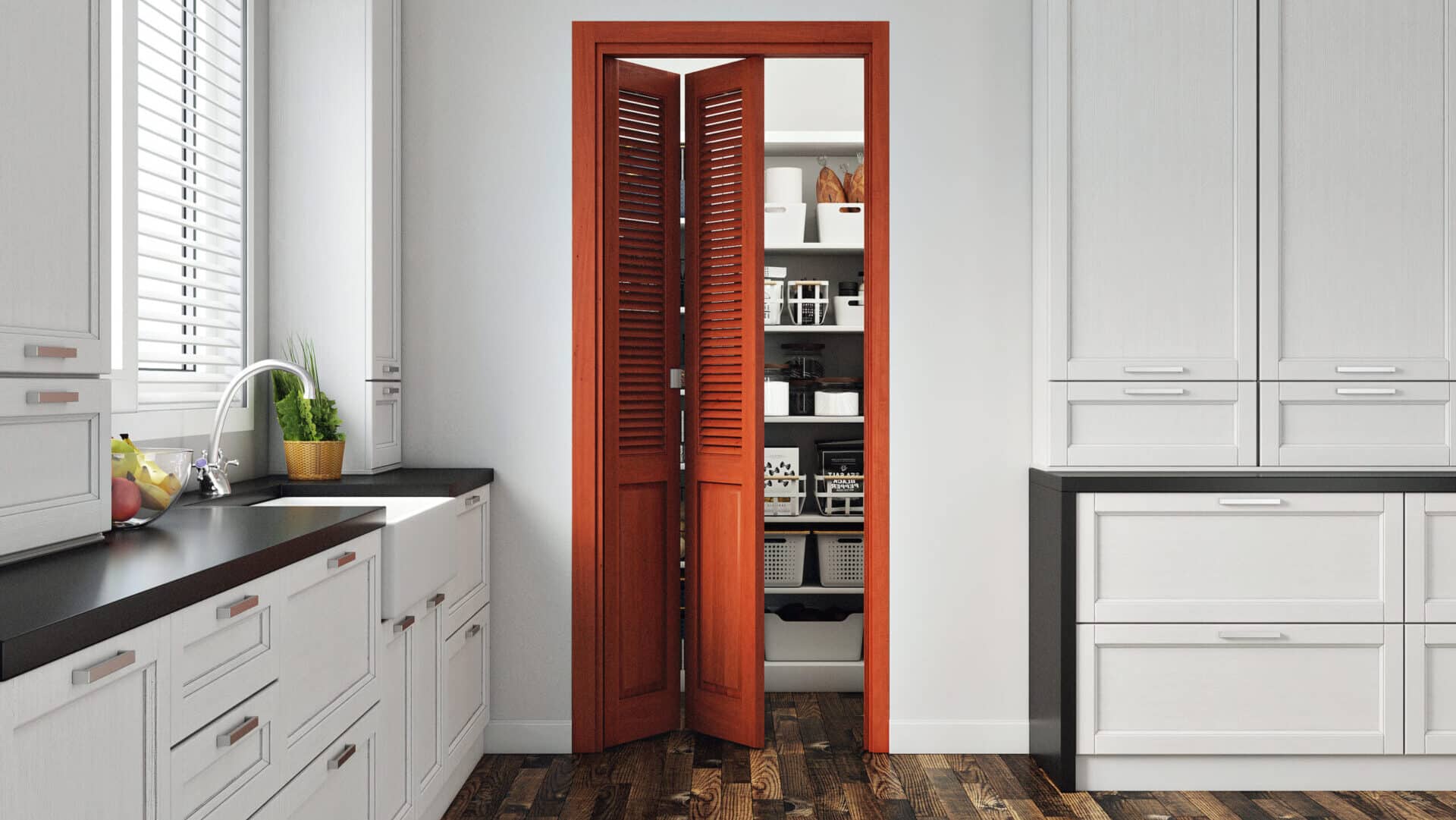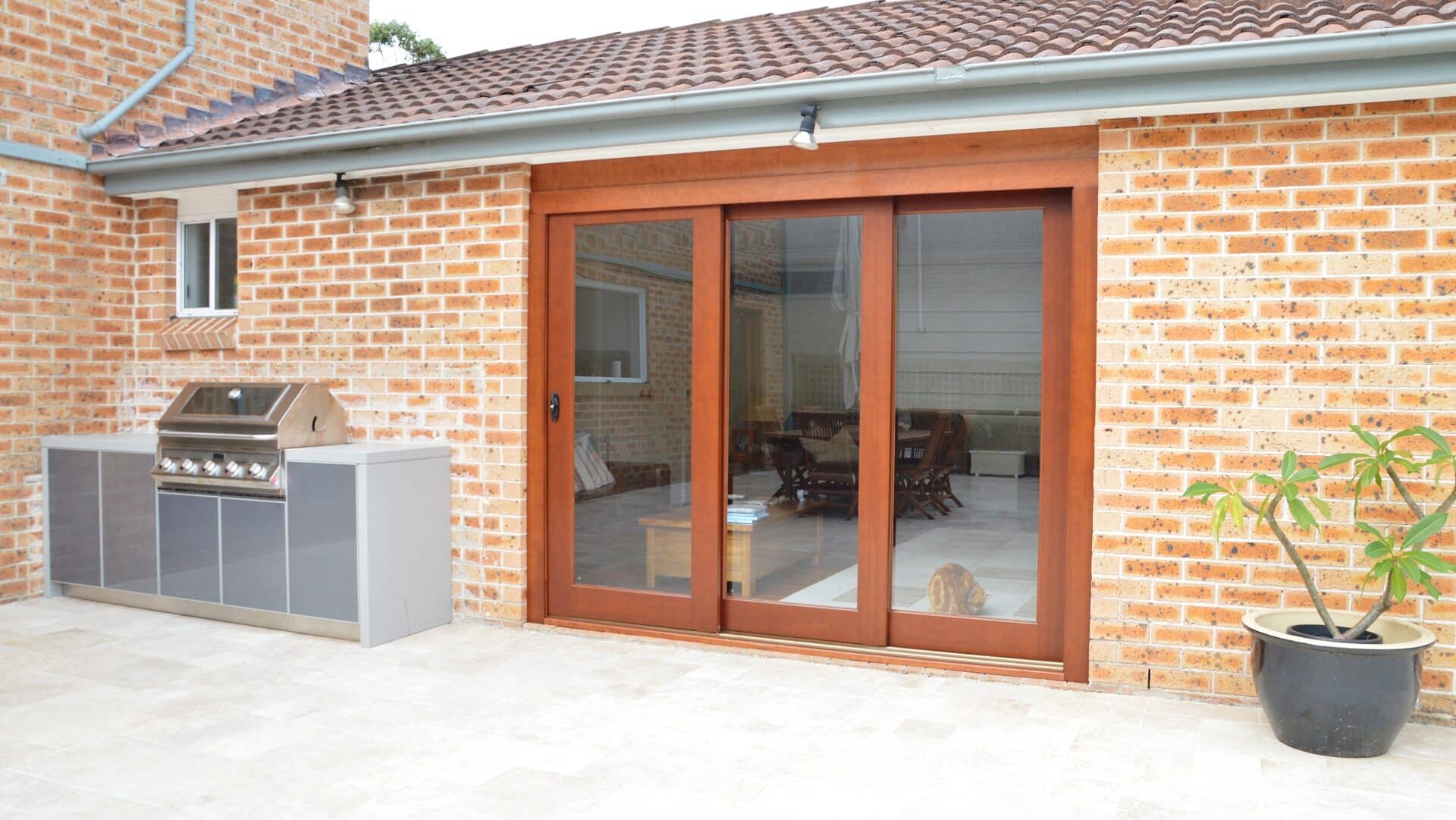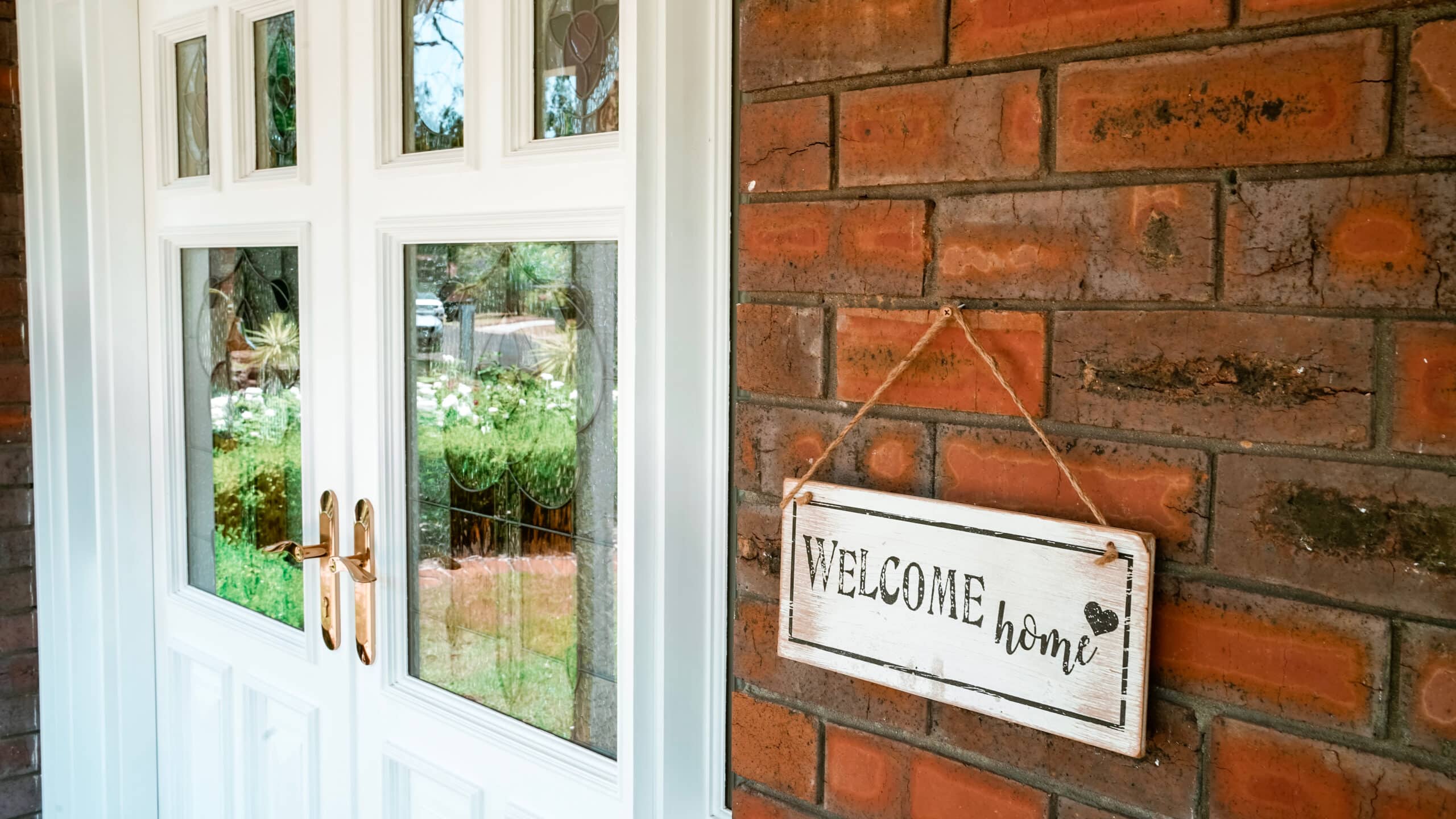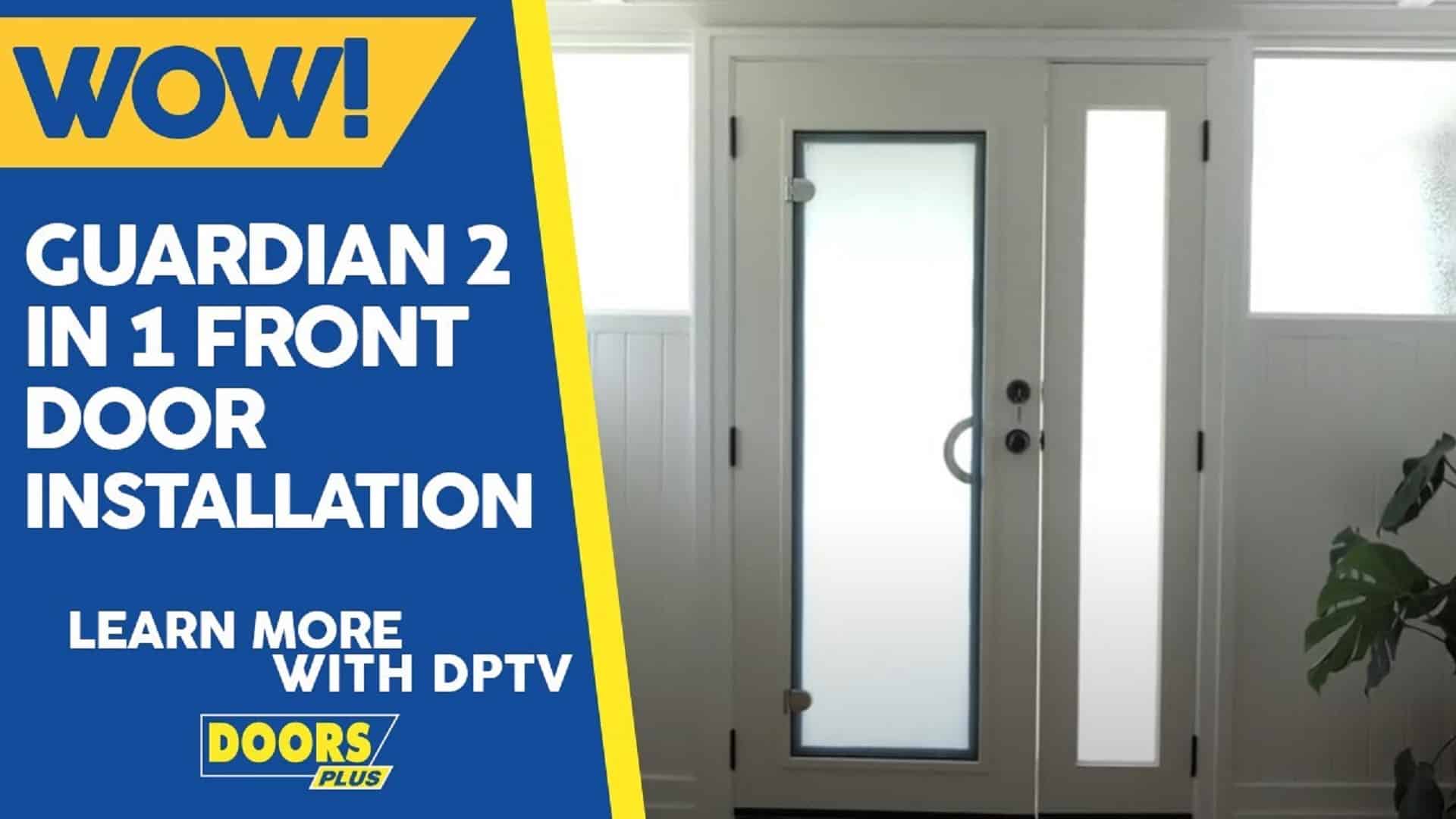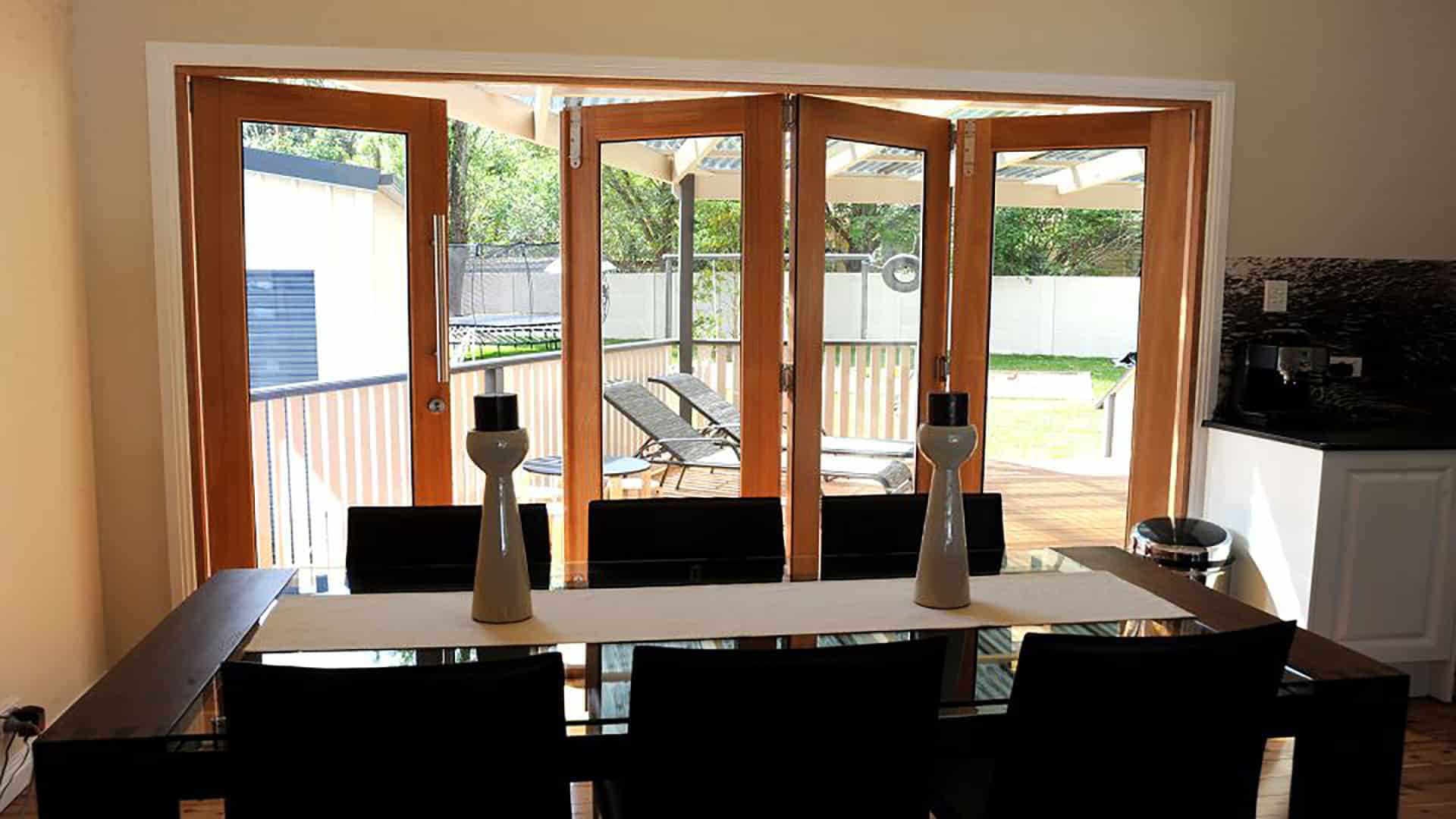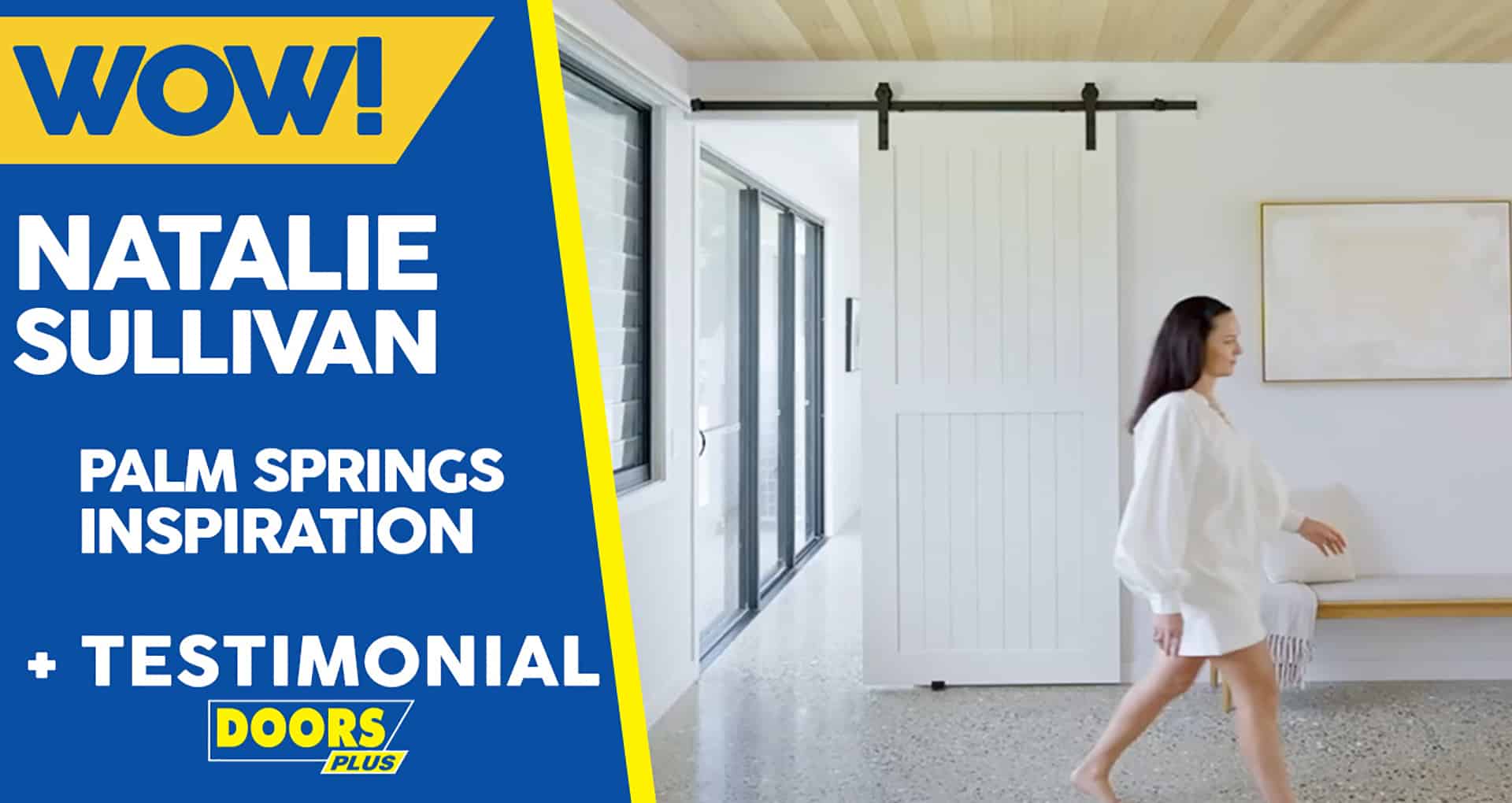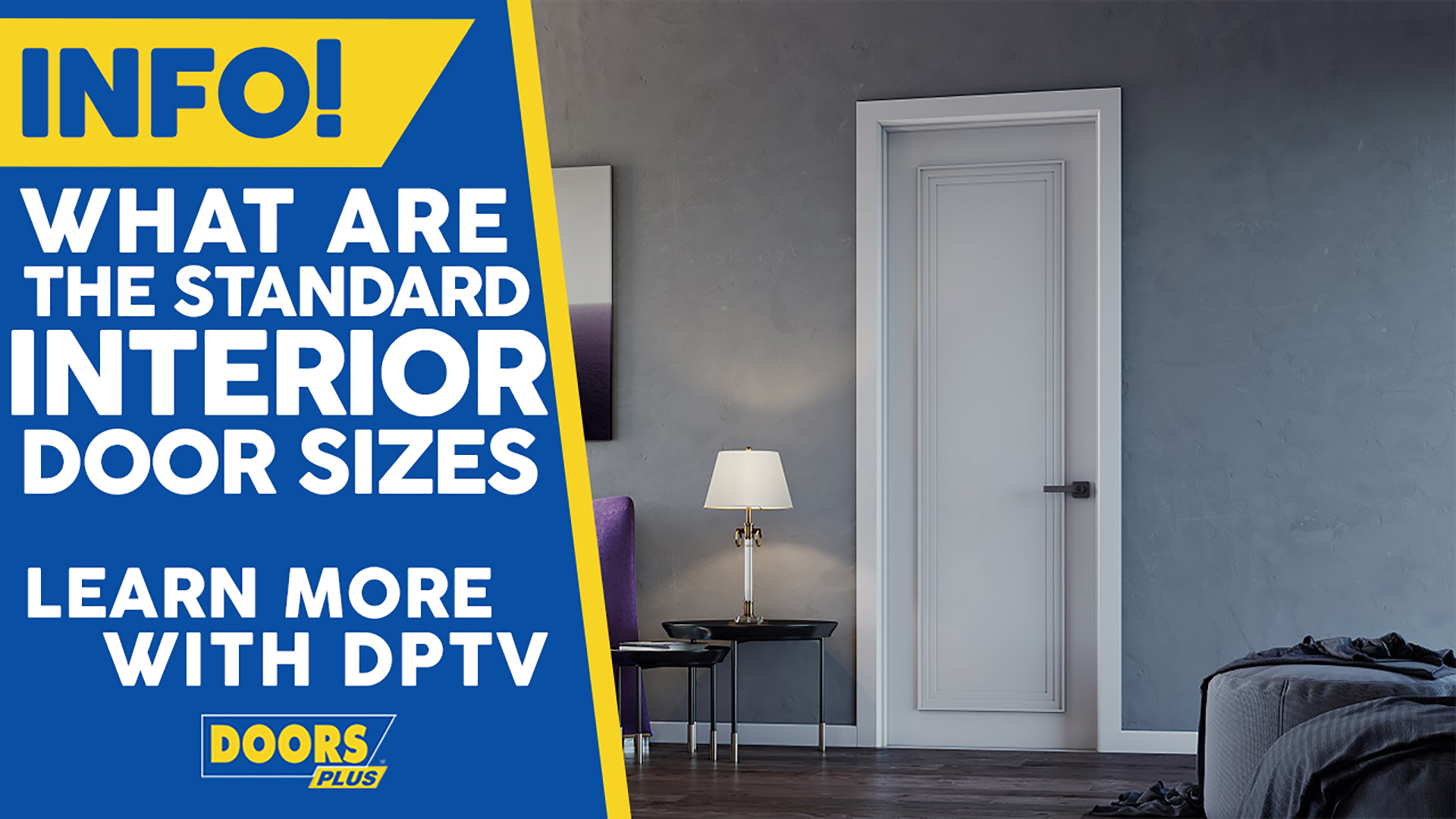How to Install a Sliding Door in 7 Steps
Sliding doors are a popular choice for both style and convenience.
Internal sliding doors, such as solid timber barn doors, can save on floor space, close off open plan living and dining areas, or create a decorative feature in their own right.
Externally, sliding doors are an excellent solution for opening your living area out onto a patio, decking or garden and bringing the outside in.
If you’re thinking of buying sliding doors for your home, whether inside or out, you will need to decide whether to hang them yourself or get a professional in.
If you know how to install sliding doors and can do it yourself, you will save the cost of the contractor, but only if you get it right – the last thing you want is to be paying out for someone to come and fix your mistakes!
Paying an hourly rate for a contractor can typically add up within a range of pricing levels, dependant on the size and complexity of the job for the full installation, but the amount of time it takes will depend on things like the types of sliding doors, the size and material, and the condition of your existing framework.
Here, you can find an outline of how to install sliding doors, whether internal or external, to give you a better understanding of what the process involves.
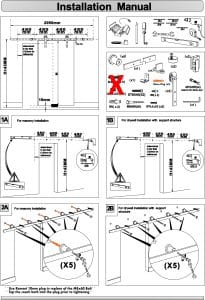
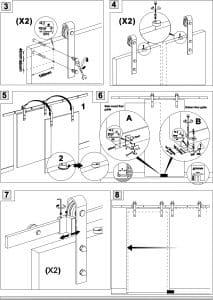
Before You Install Your Sliding Door
The first thing to do is to prepare your workspace.
Make sure you’ve got the space and equipment you need, and – crucially – have someone else on hand to help you.
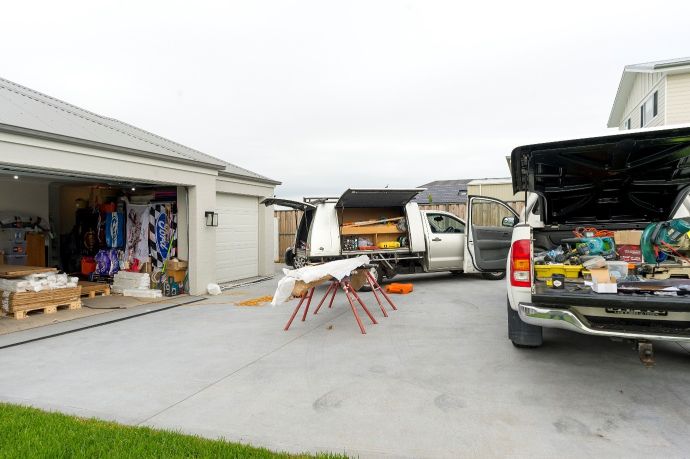
When it comes to lifting and mounting the doors, you will need an extra pair of hands! Next, check your new door, and the track and fittings that come with it.
Tools
• Drill and drill bits
• Pencil
• Ruler
• Screw driver
• Spanner
• Spirit level
• Step ladder
• Tape measure
• Screws
Measure Your Door Frame
Check that your door frame is square and that the existing framework is suitable for the doors you want to install – if not, there may be more work that needs to be done before you can get the doors in place.
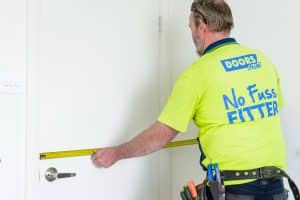
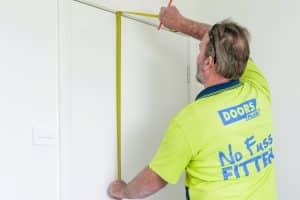
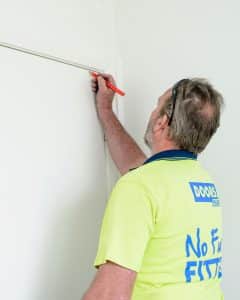
External aluminium doors will likely be supplied as a full unit, with the frame included, and the sliding door will sit behind the fixed panel when open.
Internal sliding barn doors will hang on a track above the opening, and slide along the wall to open.
You should check for any specific requirements when it comes to measurement and placement, to allow for the proper function of the doors – such as the height needed above the door, and floor clearance underneath.
For internal sliding doors, you will need to make sure that you have adequate wall space alongside the opening so that the door can sit flush with the wall when fully open.
Once you’re happy that your opening is suitable and the frame is prepared, you can then measure the centre of the door opening and mark the frame.
Install Tracks
Refer to an expert for guidance about positioning the sliding door track.
Measure and mark where the tracks are going to go, pre-drill your holes, and attach to the door frame on either side of the centre point.

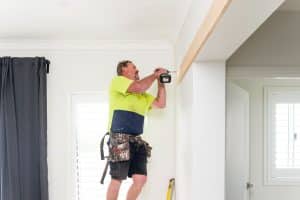
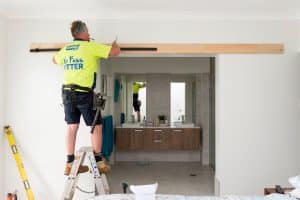
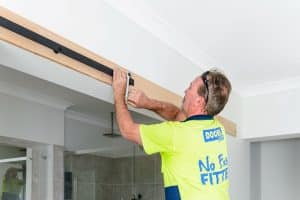
Internal sliding barn doors will hang from this top track.
For external aluminium doors, you will have a track at the top and the bottom of your doors, Identify which panel is going to be your sliding panel and which will be fixed.
When installing the sliding door track, position it so that the sliding pane goes on the outside, with the fixed pane on the inside.
Attach Rollers to Sliding Door
For internal barn doors that hang on a track, you may only need to install rollers at the top of the doors.
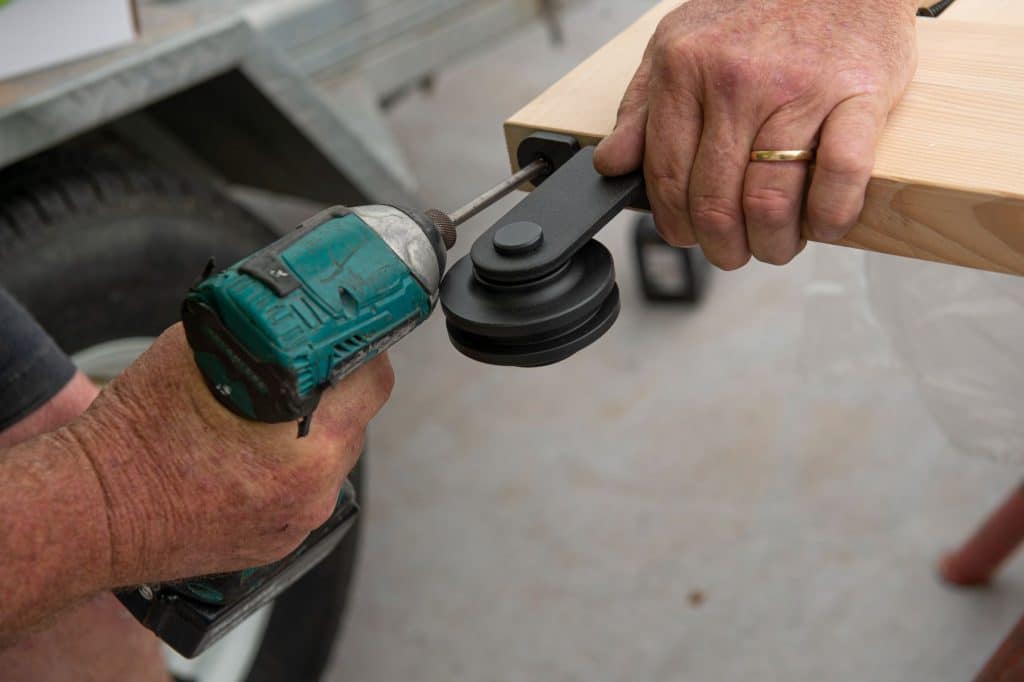
For external aluminium sliding doors, you will have rollers for the top and bottom of the sliding panel.
Check with an expert if you feel stuck, measure and mark where the wheels need to go, screw them in place but leave a little loose until the door is on the track so that you can make final adjustments.
Mount Door
Grab your happy helper and carefully lift and tilt the door to get the wheels in place on the top track.
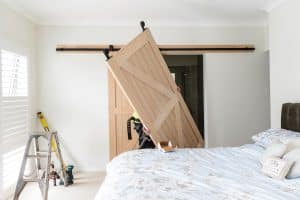
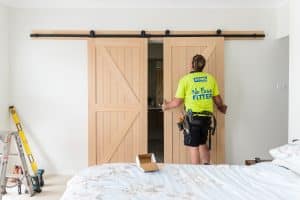
For external doors, mount the fixed panel first, and then the sliding door.
Make sure that the wheel sits on the outside bottom track.
Install Door Guides
For internal sliding doors, it’s a good idea to screw a door guide to the wall at the base of each door to hold them in place so that they don’t wobble (allowing for flooring or carpet underneath, if this has not already been laid).
Test Your Sliding Door
Test your doors to make sure that they open and close smoothly.
Use a spirit level to check that they are hanging correctly, and for double doors make sure that they are hanging at the same height and in line with each other.
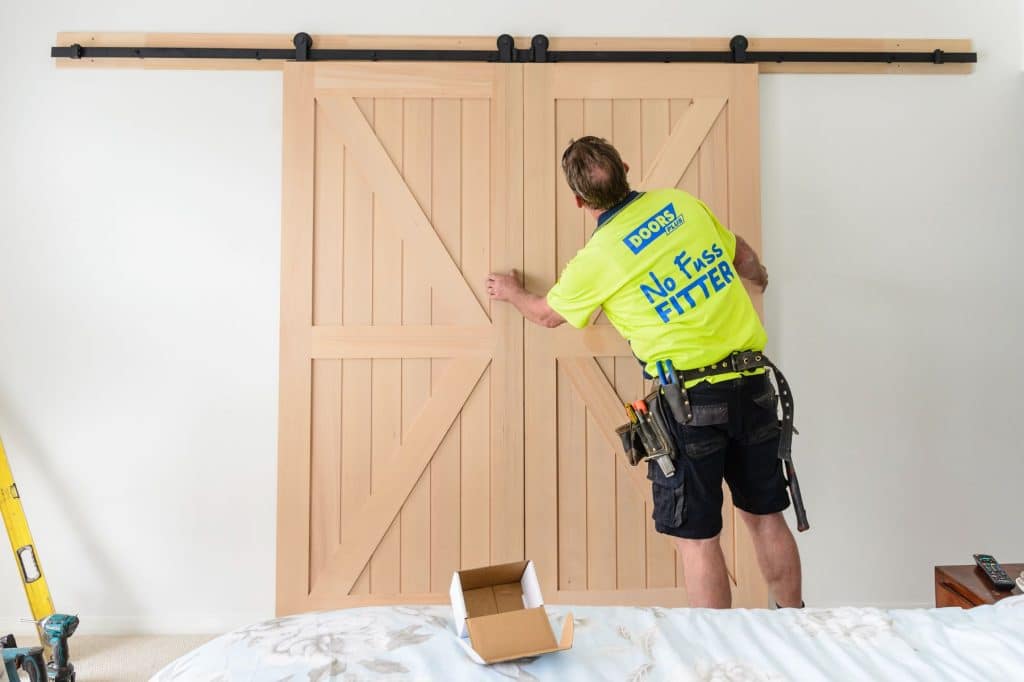
At this point, you can adjust and tighten the rollers.
Install Bump Stops & Hardware
For internal barn doors, install bump stops to the end of each track, and at the centre where the doors meet, to stop the doors rolling too far.
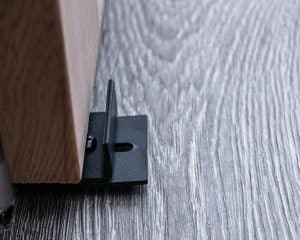
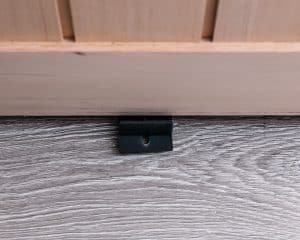
Screw these into the pre-drilled holes in the track. You can then finish your doors with hardware such as handles.
For external doors, install locking handles (often included with the door) and a security screen if you choose.
Common Questions
•What configurations do sliding doors come in?
Internal sliding doors can be single or double doors, or custom made for wider openings. They can slide along the face of the wall, into a cavity unit, or along a wardrobe sliding door track. External sliding doors can combine multiple panels, depending on the size of the opening.
•Can you install any door as a sliding door?
Most internal door options can be installed as sliding doors, which gives you a great choice of materials and styles. Find out more about the different types of sliding doors, including both solid and glazed options. Sliding barn doors are a stylistic choice, but you can also go for simple and versatile doors that complement your home without standing out.
•Do sliding doors come in standard sizes?
There is a wide range of standard sliding doors sizes, or they can be custom made to suit your space. The standard heights for internal doors ‘are 2040, 2120 and 2340 mm, and standard widths are 920, 870, 820, 770, 720, 620 and 520 mm, but not all sizes are available across all ranges. External sliding doors are made to measure, and multiple panels can be combined to fit your space.
•How much do sliding doors cost?
The cost of sliding doors will depend on the style, size and configuration of your doors. A single hollowcore internal sliding door will be more economical than a solid timber barn door, and multiple panels of external sliding doors will come at a higher cost. We can measure your space and provide an accurate quote, based on your exact specifications.
•How long does it take to install sliding doors?
This will depend on the size, material and configuration of your doors, and the number of panels you need to fit your opening. External sliding doors are likely to take longer than single or double internal doors, but if your existing framework needs to be altered or replaced this will add to the installation time. Generally, it’s likely to take anything from 4 hours to 1 day.
•How can you secure an external sliding door?
All of our external sliding doors are supplied with a double cylinder deadlocking handle, and you can reinforce the security of your doors by adding a screen door. Ensuring that your framework is sturdy and in good condition will also enhance the security of your sliding door.
•How can you insulate external sliding doors?
One of the quickest and easiest ways to insulate your external sliding doors against water and draughts is to run some silicone around the outside edge of the door frame. Learn more about how to insulate sliding doors.
Sliding Doors Installed The Right Way
Now you know the basics of how to install sliding doors, but be warned that it takes time and patience.
Be meticulous by measuring accurately, checking with the spirit level, and making final adjustments so that your doors look and work just as they should.
If you don’t feel confident doing it yourself, or don’t have the time to spare, find a trusted contractor who knows how to install sliding doors and can get you the results you want, without the headaches.
If you’re changing up the configuration of your opening or replacing old framework, rather than just updating an old door, it’s probably best to call in the professionals and get it done right.
At Doors Plus, we can arrange a free measure and quote, and then send one of our experienced carpenters to fit your sliding doors for you – no fuss.
Visit your local Doors Plus showroom for a personal consultation with one of our team.

